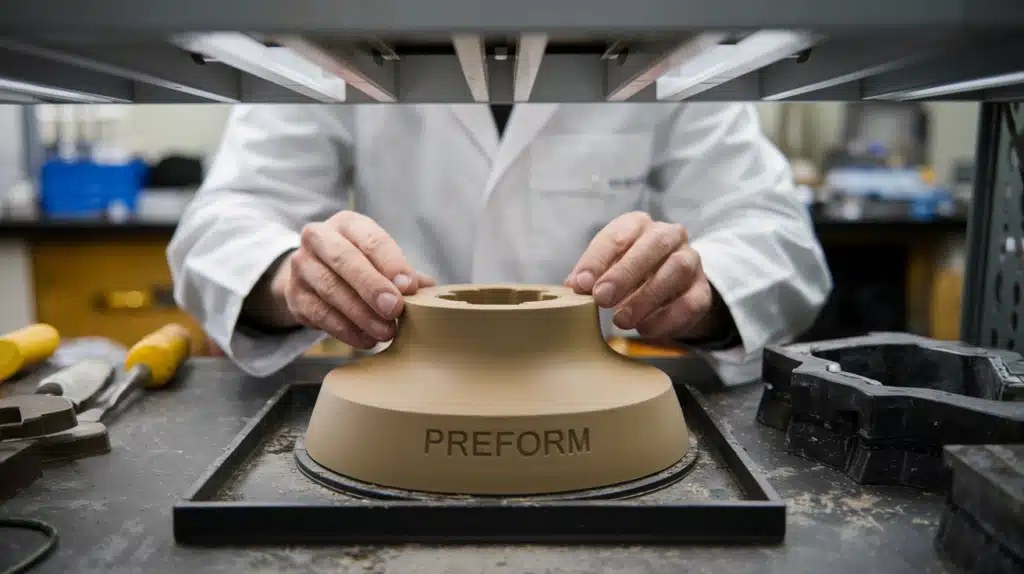When it comes to English spelling, two words that often get mixed up are preform and perform. At first glance, these words might look quite similar, but they carry distinct meanings and uses. Understanding the difference between them can be essential for effective communication, especially if you work in manufacturing, the arts, or any industry where both terms might appear. Let’s dive into the meanings, contexts, and examples of these two words to make sure you can use them confidently and correctly.
Related: Creative Ways to Phrase “Please Disregard My Previous Email”
Understanding the Meanings of “Perform” and “Preform”
To start, let’s clarify the meanings of each word.
Perform is the more commonly used word. It means to carry out, execute, or accomplish a task, action, or activity. This can range from performing a dance to performing a duty at work. If you’ve ever been on stage or needed to complete a specific task, you’ve likely come across this word.
Preform, on the other hand, has a specialized meaning and is used less frequently. To preform means to shape or mold something before it takes its final form. This term is often seen in manufacturing or production contexts, where materials are preformed into a certain shape before they go through further processes.
Common Contexts and Uses for “Perform”
The word perform is widely applicable and can be used in numerous contexts, including arts, business, and general tasks. Below are a few scenarios to help you understand how it works:
Example 1: Performing at Work

Imagine you’re drafting an email to your colleague, Josh, congratulating him on his recent success in performing his duties exceptionally well. Here’s how that email might look:
Subject: Great Job on the Recent Project!
Hi Josh,
I just wanted to reach out and commend you for how well you performed on the recent project. Your ability to handle complex tasks and perform under pressure was impressive. Keep up the great work!
Best,
Emma
Example 2: Performing in the Arts

In the context of performing arts, the word is used frequently. For instance, if you’re a director talking to an actor, you might say:
“You’ve been performing this role beautifully. Keep up the great energy, and the audience will love your work.”
In both of these examples, perform implies completing a task or showcasing a skill.
Common Contexts and Uses for “Preform”
Preform has a narrower range of contexts and uses. It’s most often found in manufacturing or technical fields. Here are some examples to clarify:
Example 1: Preforming Materials

If you work in a factory setting, you might use “preform” in the following email to your team:
Subject: Preforming Process for New Materials
Hello Team,
As part of our new project, we’ll be preforming the materials before they go into the final stage of production. Please make sure all preforming machines are calibrated correctly and that the process runs smoothly.
Best,
Alex
Example 2: Preforming in Product Development

In product development, you might refer to preforming certain elements of a product before final assembly. For instance, a manager might say:
“We need to preform these parts to ensure they meet the specifications before final assembly.”
In these examples, preform refers to giving materials a specific shape or structure in preparation for further stages.
Key Differences Between “Perform” and “Preform”
To master these words, it’s helpful to know their unique contexts. Here’s a quick comparison:
| Word | Meaning | Context/Industry | Example Sentence |
|---|---|---|---|
| Perform | To carry out, execute, or accomplish | Arts, Business, General | “You need to perform well in today’s presentation to impress the clients.” |
| Preform | To shape or mold in advance | Manufacturing | “We’ll preform the plastic parts before assembling the final product.” |
Why These Differences Matter in Writing
When it comes to effective communication and writing, understanding the difference between preform and perform helps convey your message clearly. For example, using the wrong word in a work email or industry report could create confusion about what you’re describing, especially in technical or manufacturing fields.
For instance, if you tell someone to “perform” a material, it may sound unclear or nonsensical. By using the right term in the right context, you’re ensuring that your writing is precise, making it easier for others to understand and act on your instructions.
Tips to Remember the Difference Between “Perform” and “Preform”
To keep these words straight, consider these quick tips:
- Think of “perform” as “present” – both words start with “p” and involve showing or doing something.
- Associate “preform” with “pre-shape” – both start with “pre-” and refer to shaping something in advance.
Conclusion
In summary, while perform and preform might look alike, they serve entirely different purposes. Perform is about action and accomplishment, while preform is about shaping or molding in advance, especially in manufacturing contexts. Recognizing these differences can help you avoid misunderstandings in writing and communication.
When you can distinguish these words with ease, you’re on your way to mastering effective communication in both casual and professional settings.

Burak Ozcivat is an experienced blogger at Grammar Gem, where he shares his expertise in grammar and the English language. With a passion for simplifying complex topics, Burak delivers engaging, informative content that helps readers master grammar. His insightful posts are a go-to resource for language enthusiasts.







